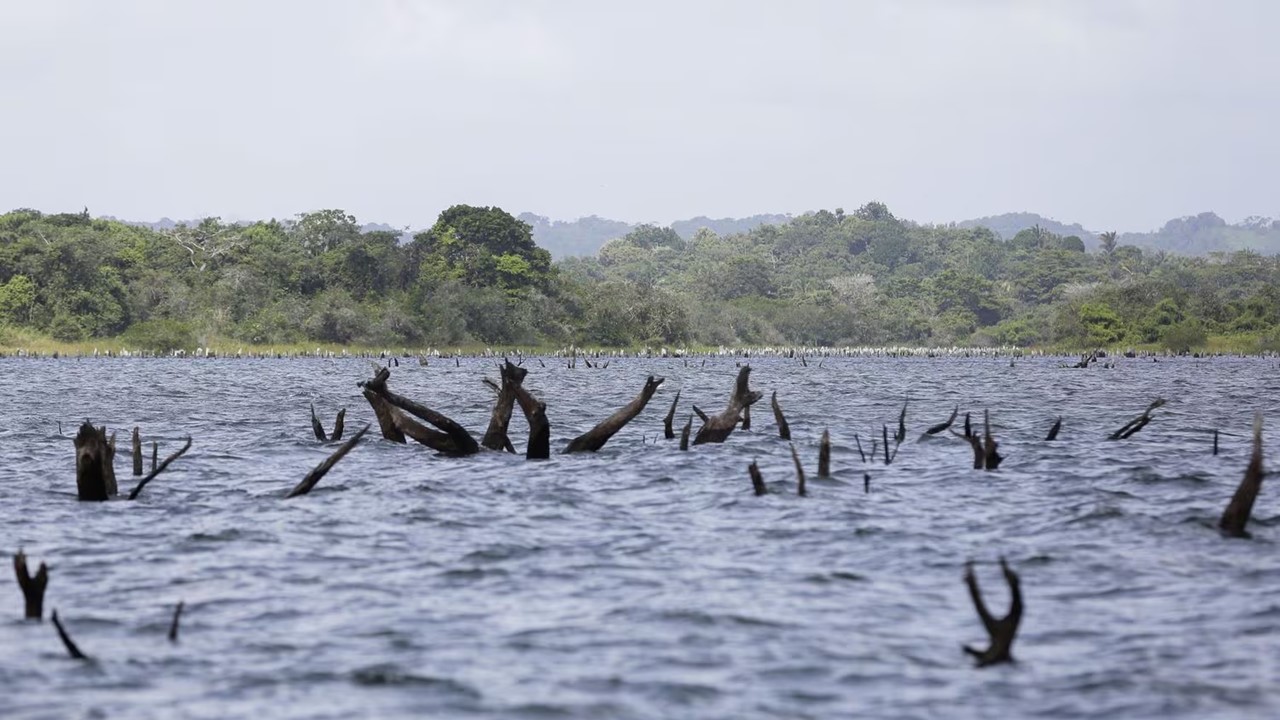The drought triggered alarms in the Panama Canal

The serious drought, a product of the El Niño phenomenon and the prolongation of the dry season has triggered alarms in the Panama Canal, forcing the interoceanic waterway to apply drastic measures to face this unprecedented situation in 2023.
Some of them are the reduction of daily transits until next year, the draft of the vessels, and the variable rate charged for the use of freshwater, which will have an economic impact in the fiscal year of 2024, between October 1 and September 30 of next year.
One of the direct effects has been the traffic jam to enter the canal, with up to 160 ships waiting, mainly ships without reservation, that is, without a scheduled crossing, which are mostly bulk carriers, gas carriers, and chemical tankers, among others.
Yesterday, Dec, 8, there were 75 ships in the queues, 47 with reservations and 28 without it, according to data from the interoceanic waterway, his relevant global trade route under normal circumstances moves 500 to 510 million tons of cargo each year.
The economic consequences
The Panama Canal has gradually reduced the number of daily transits this 2023, reaching 31 ships in November, and 18 ships are expected to cross next February, according to forecasts.
“The forecast is that in January there should be 20 transits and in February 18. We are evaluating this (…) and monitoring every day because if there may be some rainfall like in November, the accumulated rain was 300 millimeters and that helped a little to improve the situation,” the canal’s hydrologist supervisor, Nelson Guerra, told EFE.
The Panama Canal could lose around $200 million in revenue in 2024 due to the reduction in daily transits that it has been forced to implement due to the drought, its administrator, Ricaurte Vásquez, said last August.
In September, it was announced that, as compensation, a reduction of nearly 50% in the rate it charges for using fresh water due to the limited rainfall this year in Panama, a country that only has two seasons, dry and rainy.
Despite this and given the reduction in daily transits and a traffic jam at the entrance to the canal, some shipping companies have chosen to explore alternative routes, even though, they may be longer and more expensive, as reported by the local.
In hot a year, the main lake level drops
Due to the El Niño phenomenon, the average accumulated rainfall in the canal’s hydrographic basin – approximately 350,000 square kilometers in the heart of this highway – for 2023 is 25.6% less than the average of the last 73 years. , according to official information. “We come with a water deficit issue this year. Regarding rainfall, in the period from January 1 to December 5, and compared to the historical record from 1950 to date, (2023) it is, so far, the third year with less rain or drier in the last 74 years,” said Guerra.
The Canal has already warned on previous occasions that it has rained less in the country for two decades. Last October was the driest month on record as it rained 41% less than usual.
Therefore, the water level of Gatun Lake, the main source of the canal, has fallen to approximately 81 feet PLD (Precise Level Datum) compared to 88 feet PLD in a “normal year,” an atypical situation. in December at the beginning of the dry season in Panama, Guerra explained.
The Panama Canal explores the possibility of creating a new water reservoir, a decision that falls in the hands of the Executive.
.





